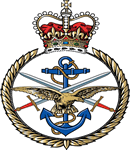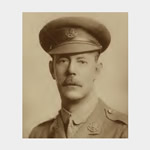Commemorated: | |||
| 1. Memorial: | Twyford (The Assumption) Churchyard | North-East of church. | |
| 2. Memorial: | The (1940) Scroll - WW1 Roll of Honour | 20D GQS | |
Awards & Titles: | |||
Family :
Second son of the late R. A. Fitzgerald (O.H.), and of Mrs. Fitzgerald, now Mrs. Blewitt, of Wallop House, Hampshire.Service Life:
Campaigns:
- The First World War 1914-1918, World-wide.
| Unit / Ship / Est.: 15/Durham Light Infantry |
15th (Service) Battalion Formed at Newcastle in September 1914 as part of K3 and became part of 64th Brigade in 21st Division. Moved to Halton Park, going on to billets in Maidenhead in December 1914 and then back to Halton Park in April 1915. Finally moved to Witley in July. 11 September 1915 : landed at Boulogne |
| Action : The Battles of the Somme 1916 |
The Battle of the Somme 1st July - 18th November 1916 is inevitably characterised by the appalling casualties (60,000) on the first day, July 1st 1916. Having failed to break through the German lines in force, and also failed to maximise opportunities where success was achieved, the battle became a series of attritional assaults on well defended defence in depth. The battle continued officially until 18th November 1916 costing almost 500,000 British casualties. German casualties were about the same, and French about 200,000. The Somme could not be counted a success in terms of ground gained or the cost, but it had a strategic impact as it marked the start of the decline of the German Army. Never again would it be as effective whilst the British Army, learning from its experience eventually grew stronger to become a war winning army. The German High Command recognised that it could never again fight another Somme, a view that advanced the decision to invoke unrestricted submarine warfare in an attempt to starve Britain of food and material, and in doing so accelerated the United States declaration of war thus guaranteeing the eventual outcome. 287 Brethren were killed on the Somme in 1916.
Detail :
LIEUTENANT COLONEL Alfred E. FITZGERALD East Surrey Regiment Died of Wounds Aged 45 July 13th, 1916 Second son of the late R. A. Fitzgerald and of Mrs. Fitzgerald. Educated at Harrow. Married, in 1907, Mary Eleanor, second daughter of Colonel Irwin, of Lynehow, Carlisle, and leaves two daughters. After farming in Natal, Colonel Fitzgerald entered the British South African Police as a Trooper and went through the operations in South Africa in 1896, for which he received the medal. He obtained a Commission in 1899 in the West Indian Regiment, and, after serving as Garrison Adjutant in Jamaica, he was specially employed in the Gold Coast, and in 1900, took part in the Ashanti Campaign, for which he also received the campaign medal. From 1904-1908 he was with the Egyptian Army in the Sudan and Kordofan, and, in 1908, was transferred as a Captain to the East Surrey Regiment, serving most of his time with them in India. In 1902 he was appointed Adjutant of the Nilgiri Volunteer Rifles in Ootacamund. He was given his Majority in September 1915, when he proceeded to France as Second-in-Command of the 9th King's Own Yorkshire Light Infantry and took part in the Battle of Loos. Next day he was given the command of the 15th Durham Light Infantry and served with them until he was fatally wounded in the Battle of the Somme, on July 1st, 1916, and died twelve days later. He was a freemason an member of Faith Hope and Charity Lodge No 1285 which was based in Madras. He was mentioned in Despatches. His Brigadier wrote: There is no harm in telling you now that his name went in for immediate reward of a D.S.O., and I have no doubt he would have got it had he lived, as I had especially ‘starred’' his name. A brother-officer wrote: There was not an Officer or a man in the Regiment who would not have followed him anywhere, and, what is more, they did so, when they were asked to the other day. One of his men wrote: We had a trying time of it. The Colonel worked wonderfully, and the men loved him for the way he did it. They will never forget how brave he was, and how he encouraged them and led them to victory that day. 15th Durham Light Infantry War Diary tells what happened on 1st July 1916: The battalion moved up into the assembly trenches on the night of the 30th June as the Operation Orders attached. Battalion moved off from Buire at 8 p.m. and took up their allotted position in the assembly trenches in support to the 9th KOYLI. Battalion headquarters took up a position in a dugout in Shuttle Lane. The bombardment was terrific. The German retaliation was surprisingly feeble and the allotted positions were reached with but few casualties. The time fixed for the assault was 7.30 a.m. on the morning of the 1st July. The hour immediately preceding this was marked by an intense bombardment by all available guns and mortars on the German first line system. About 3 minutes from 7.30 a.m., i.e. 7.27 a.m., three mines were sprung in the Tambour. The day itself was beautifully fine and clear and our aeroplanes were scudding about overhead. Promptly at 7.30 a.m. the first assaulting battalions, the 9th and 10th KOYLI supported by the 15th Durham LI and the 1st East Yorks Regt respectively clambered up the assaulting ladders and with magnificent dash made straight for the German line. The Germans opened up a heavy machine gun and rifle fire and many officers and men were wounded soon after mounting the parapet. But there was no hesitation. All were eager to get across and meet the enemy at close quarters. What opposition that survived was quickly overcome by grenade and bayonet and the prisoners who came up from their dug outs were sent to the rear to Queen’s redoubt under charge of slightly wounded cases. The attack now proceeded along the German communication trenches bombing from trench to trench. There was little cover for those Germans who remained for the trenches paid eloquent tribute to the power of our guns, being smashed up entirely and in some case being quite unrecognisable as trenches. Led by the Commanding Officer, Lt Col A E Fitzgerald, and their respective company and platoon officers the men fought their way forward to the Sunken Road and from there to Crucifix Trench. These positions were immediately consolidated. Machine guns and Lewis guns were put in position and all arrangements made to hold the position against counter attack. Battalion headquarters were established at the head of a German dugout in Sunken Road, the interior being used party to confine some wounded prisoners and partly to shelter own wounded, and here the CO assumed command of the various parties of different regiments, 9th and 10th KOYLI, some Lincolns, some 1st East Yorks, and on our own men who had now become intermingled. The casualties among the officers of the different regiments had been severe and some little difficulty was experienced in bringing these remnants under direct control from the HQ dug out. With the aid of such officers as remained this was ultimately effected and word was sent by runner to Brigade HQ in Shuttle Lane advising them of the situation and asking for advice. Any further attempts at a forward movement was rendered extremely hazardous by the fact that enfilade MG fire from both flanks swept the area between Crucifix Trench and Shelter Wood our next objective. Fricourt on our immediate right still held out and Germans in Birch Tree Wood enfiladed us from our left. Moreover with the effectives at the disposal of Lt Col Fitzgerald an attack across the open on Shelter Wood was considered out of the question. Word came from Brigade HQ however to reorganise and press on to Shelter Wood and, if possible, reach Quadrangle Trench, the last objective. About 5 p.m. word came in to the CO in the dugout in Sunken Road that the Germans had been seen massing on the left of Sunken Road presumably with a view to counter attacking. The CO hurried out to supervise arrangements to meet them. Machine guns and bombers were moved up to the left. A party of about 300 Germans actually did appear on the left but were mowed down by our Lewis guns. It was while supervising these arrangements that the CO was wounded, a machine gun bullet striking him full in the leg about half way between the knee and the thigh. It was roughly dressed there and then and he was carried back to the headquarters in Sunken Road, a place of tolerable safety. He refused to be carried downstairs as this would mean moving a badly wounded man from the only stretcher on the place. He stayed here, tended by his servant, until it was possible to remove him nearly 14 hours later. July 20th we heard with great regret that Col A E Fitzgerald had died of wounds received on July 1st. He died at the Military Hospital, 17, Park Lane on July 11th (sic) He is listed in the shrine in Great Queen Street as Fitz-Gerald
Masonic :
| Type | Lodge Name and No. | Province/District : |
|---|---|---|
| Mother : | Ormond-Iles Lodge No. 3433 E.C. | Burma |
| Joined : | Lodge of Faith, Hope and Charity No. 1285 E.C. | Madras |
Initiated | Passed | Raised |
26th March 1912 | 30th July 1912 | 27th August 1912 |
Source :
The project globally acknowledges the following as sources of information for research across the whole database:
- The Commonwealth War Graves Commission
- The (UK) National Archives
- Ancestry.co.uk - Genealogy, Family Trees & Family History online
- ugle.org.uk - The records of the United Grand Lodge of England including the Library and Museum of Freemasonry
Additional Source:
- Founder Researchers : Paul Masters & Mike McCarthy
- Researcher : Bruce Littley

